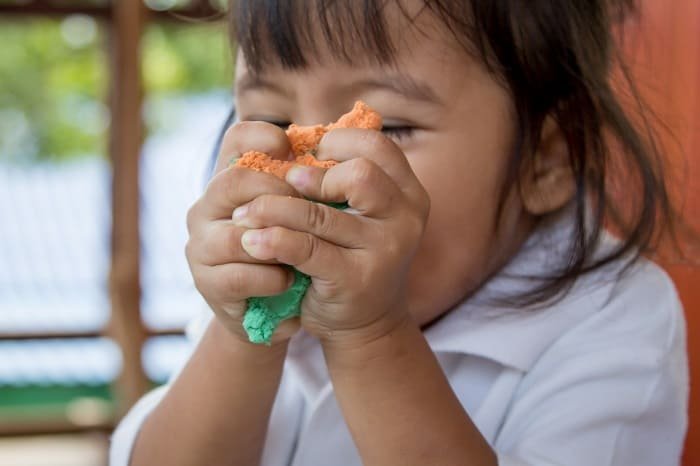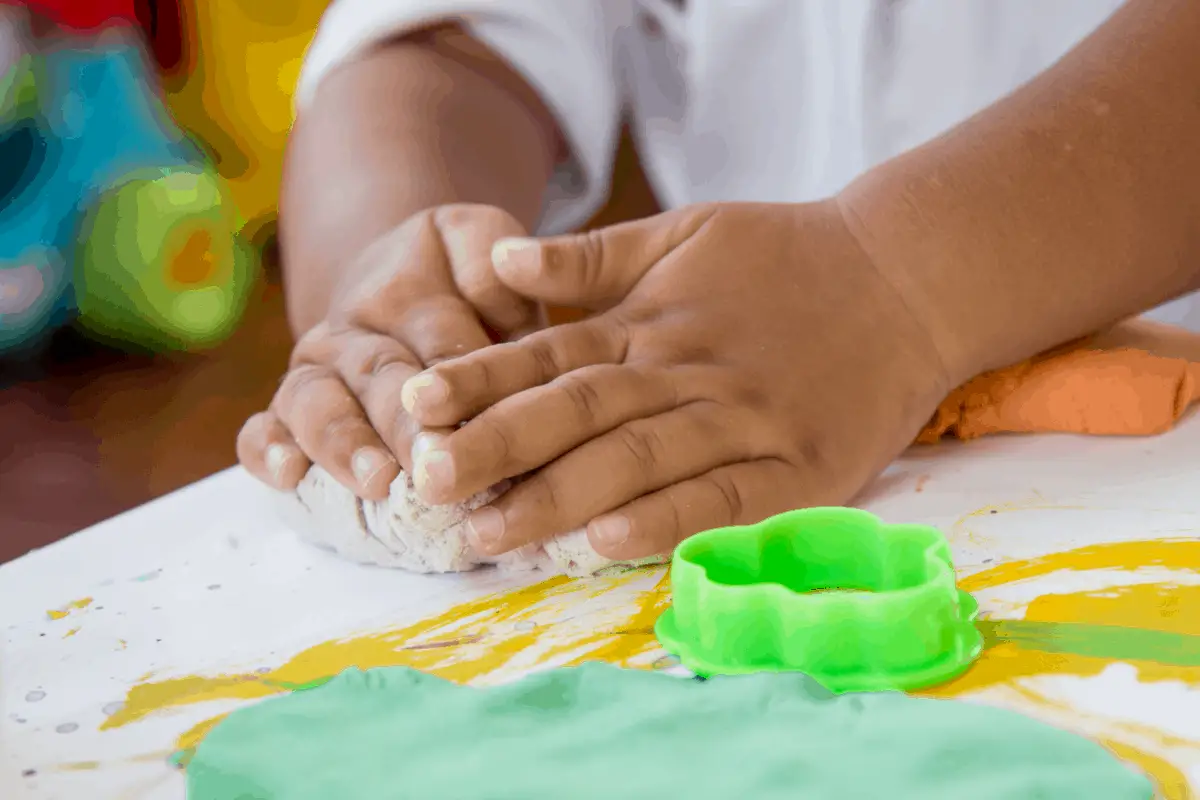Last Updated on October 21, 2024
An avid reader of our blog sent us an mail a few weeks ago asking us if Play-Doh is non-toxic. While we quickly did our research and answered our reader, we decided to make a blog post to enlighten our readers and visitors about Play-Doh. So we encourage you to read until the end and learn more about Play-Doh and the safety of your kids.
Table of Contents
What is Play-Doh?
Play-Doh is a favorite plaything you find with kids, although adults also use them to pass time or to learn arts and crafts. Simply put, we define Play-Doh as a soft putty material that is used by kids to learn arts and crafts.
Play-Doh was first manufactured in Ohio in the 1930s for use as a wallpaper cleaner. It wasn’t until the 1950s that it was reinvented as a play toy and sold to kids. It is made from naturally occurring materials such as water, flour, mineral oil, borax, and salt.
As a parent, it is completely normal to be concerned about the safety of your kids. This is why we understand why you are interested in finding out if Play-Doh is toxic or not.
Is Play-Doh Edible?
According to the manufacturers, Play-Doh isn’t designed to be edible and should not be eaten. While the company has refused to reveal the active ingredient in makeup the Play-Doh compound, we gathered that it is made from flour, salt, and water.
The compound doesn’t contain any milk products or peanuts. But the company warns that children who are allergic to wheat gluten may suffer from allergies when they eat the compound. It is also worth mentioning that you should keep the compound away from pets as the salt content can be harmful when swallowed by animals.
Is Play-Doh Non-Toxic?
On the official website of the company, in the Frequently Asked Questions section, the manufactures gave the assurance that it is non-toxic. It also went further to ascertain that the compound is non-irritating and non-allergenic. The only issue they covered was on that of children who are allergic to wheat gluten which we already mentioned above.
It will be in your best interest to try as much as possible to prevent your kids from swallowing it. You shouldn’t be worried if your toddler or pet swallows the compound. This is because it most certainly will be passed out of their system in the form of stool. You can speed things up by administering enemas to get them to empty their bowels.
How to Remove Play-Doh from your Carpet and Fabric?
It is normal for kids to get the Play-Doh compound in the carpet or upholstery and create a bit of mess. It is easy to remove the compound by simply using hot water and any cleaning solution.
You should first allow the compound to dry completely before attempting to remove it. This is because it is a lot easier to get the stains out when it is dry than when it is still moist. Once the Play-Doh is dry, you can make use of a brush to loosen the compound from your fabric or carpet. Afterward, you can then vacuum your carpet or use soapy water to clean your fabric. This should get the compound out. If you still notice stain after cleaning, you might need to repeat the process until you can’t notice any more stains.
The best time to perform the cleaning is as soon as the kids are done playing. This you can easily do by using the Play-Doh to lift the residues from your floor and tables. Gently press the moist compound against the stains to get them off. You can easily scrape away dry pieces of the compound without using water. This prevents additional moisture from coming in contact with a compound which can make cleaning difficult.
How to Protect your Play-Doh from Drying Out?
The first thing you need to do to keep your Play-Doh from drying out is to keep them in a closed container. If you leave it exposed, the compound will dry out making it difficult for it to be molded or worked on. You can also restore the softness of your Play-Doh by simply adding water to it gradually and then working it in until it is moist enough. You can also make use of a wet paper towel to wrap the compound and keeping it in s closed container overnight. This should get the compound to absorb some of the moisture making it easy to work on.
What to Do if your Child Swallows Play-Doh
Even though the compound is non-toxic, you shouldn’t allow your kids to swallow it. We understand that kids have a mind of their own, and will likely take a bite out of it when you are not looking. This is why we recommend that there should be adult supervision whenever kids are playing with the compound.
Kids who are younger than 3 can be supervised by older kids who know better than to swallow the compound. In the event that your kid swallows a large amount of the compound, you should give them plenty of water to drink. This helps to speed up the detoxification process and gets them to pass out urine which will help to remove the excess salt in their system.

Commercial playdough is non-toxic but contains an incredible amount of salt. So does most home-made Play-Doh. This is why in most cases; your kid doesn’t feel the need to eat too much of the compound due to its unpalatable taste.
You can make your own home-made Play-Doh by using ingredients such as powdered milk, wheat flour, color dyes, and peanut butter. You want to ensure that your child isn’t allergic to any of the ingredients to prevent emergencies when they swallow the compound.
You can also opt for edible Play-Doh if you are worried about your child swallowing the compound. But you should also be aware that it is best they don’t swallow it as the compound could also cause a potential choking hazard.

Lacey is an environmental enthusiast and passionate advocate for living green and sustainable. She believes that everyone can make a difference, no matter how small. Lacey is dedicated to reducing her own carbon footprint and educating others on the importance of living greener. She is an advocate for green energy and sustainable practices. She is an active member of her local community, volunteering with local conservation efforts, and taking part in sustainability initiatives. Lacey is a firm believer that the only way to ensure a sustainable future is to work together and make small, but important changes.

